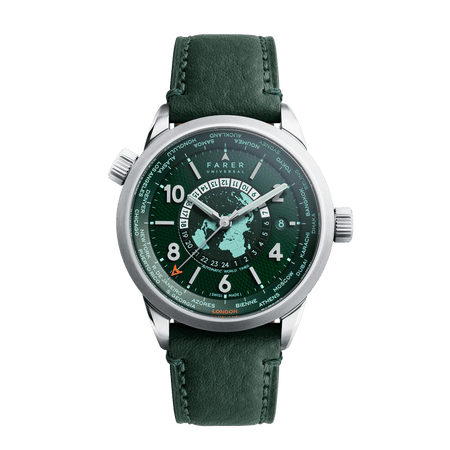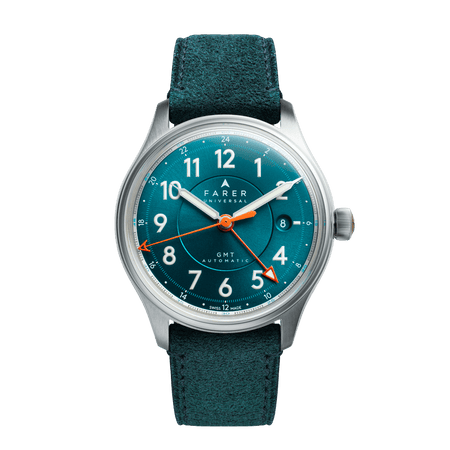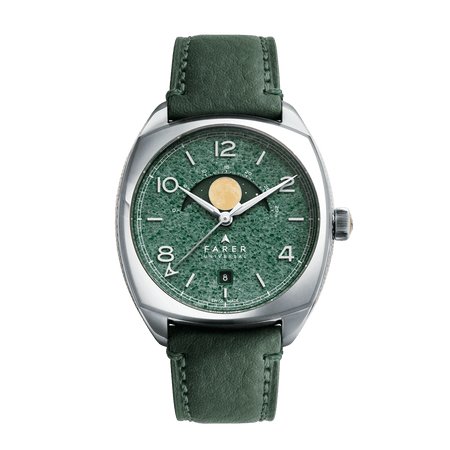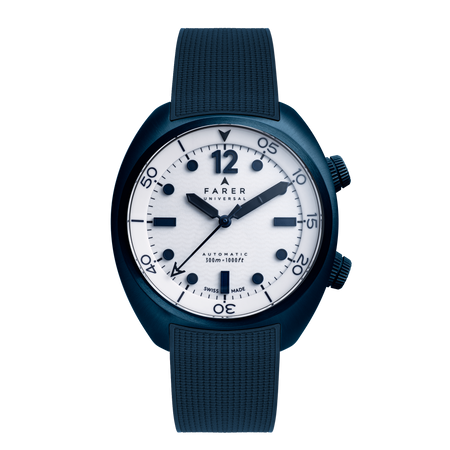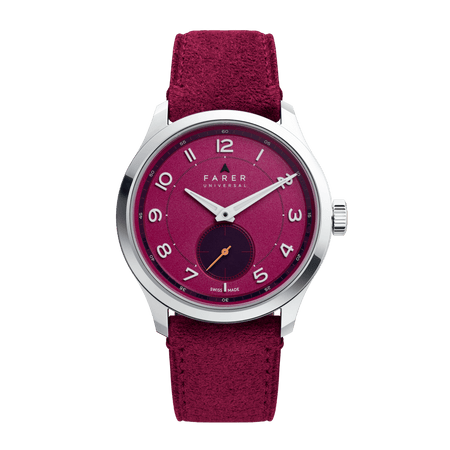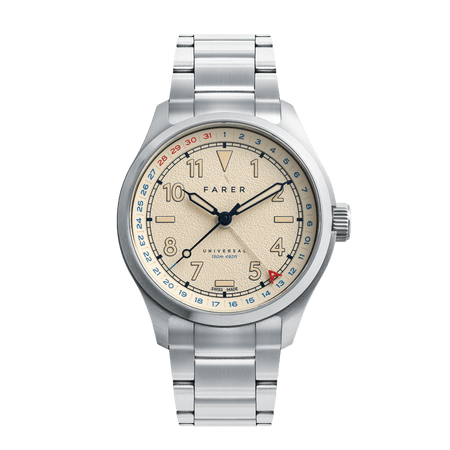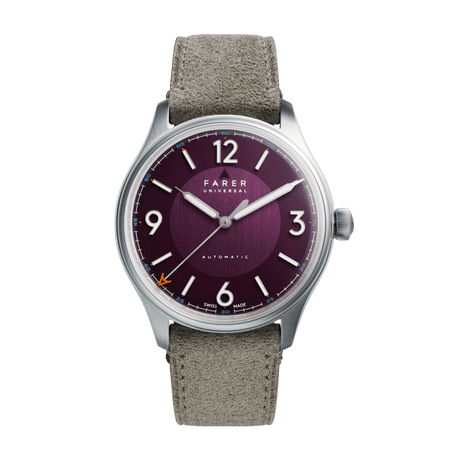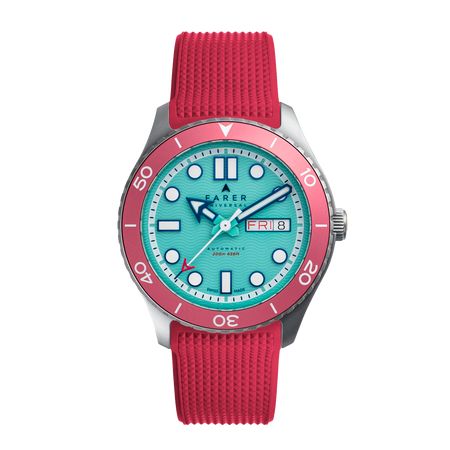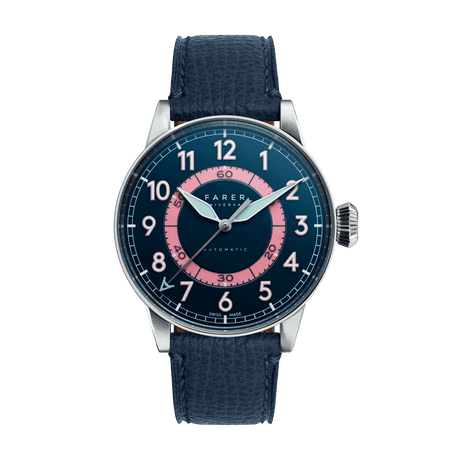WORLD TIME IN REVIEW: GMTs and World Timers
featured | 19 Mar
There’s no doubting the practical use of having a second - or even several - time zones on your wrist. Even if you seldom leave your desk these days, knowing the time where your international colleagues are is more than handy.
If you live in the US, you’ve got six time zones to deal with at home before you’ve even picked up your passport. And waking your nephew in New South Wales because you forgot it’s 3am seldom makes you popular. A GMT or a World Timer neatly does away with all that ‘was it +8 or +6?’ faff.
It’s one of the more useful complications your watch can have.



There’s watchmaking history to think of too. For example, our Aldrich World Timer uses Emmanuel and Louis Cottier’s mechanical system; a simple but particularly elegant way to show simultaneous world time. It works by linking the time in 24 cities around the globe to a ‘home city’ reference.
That’s a lot of information to get on a dial, but we’ve aimed to make it clear and simple as possible. There’s no fuss and no frippery; everything works visually because it’s there to do a job, not just look good.
We’ve cut the case to have plenty of visual appeal too. It’s a wrist-friendly 39mm and made from solid 316L stainless. The sides are a combination of micro-blasted recesses that follow the lug shape and polished edges. The lugs themselves and bezel are brushed. The whole plot should feel a great deal more expensive than the price ticket suggests.
If you’re nifty, you can even get your World Timer to tell you three different times. If you know how many hours ahead or behind your third timezone is, just turn the bezel forward or back by the same number and read the third time from its 24 hour scale.
We’re absolutely open about using Swiss ETA or Sellita engines. That means you won’t be paying through the nose for servicing or be scratching around should your watch need a spare part. The Roché’s case houses a 28,800bph Elaboré ETA 2893-1 with a 48 hour power reserve and a matte red bespoke winding rotor. And we guarantee our movements for five years.
GMTs are a little simpler but no less ingenious. Once people started travelling seriously by air in the late 1950s, life got complicated; there was the time back at home - and then the time where you were now. Keeping track of both wasn’t possible with a conventional, three-handed watch. Rolex came up with a typically elegant answer; have an hour hand for each. On their first GMT watch in 1954, the main dial told the time in your new timezone and a 24 hour hand simultaneously pointed to home time on an outer bezel.


The Lander III uses the classic extra hand and 24-hour track approach with its GMT complication. Here you have a secondary GMT hand that runs around a 24-hour track on the outer edge of the three-stepped dial. Just set the hand to the timezone you want and read the time from the 24-hour scale.
The Lander III’s dial is worth a mention on its own.
We wanted the contrast of the sea-green sunburst background and the embossed white numerals to make it easy to read and a joy to keep looking at. That embossing comes from a 14-pass overprinting process and, at night, the green lume stands out against the ice blue of the syringe hands. Inside its 39.5mm stainless case, the Lander runs a 42-hour Sellita SW330-1 Top Grade automatic movement with a 42 hour power reserve.


Our Maze GMT Bezel (named after Maze Hill in Greenwich) is a more modern take on the GMT - designed to be a robust one too - always handy in a travel watch. The bronze crown screws down onto the case and the caseback is held with four screws, threaded into the thickest point of each lug. It’s one of those useful ‘do everything’ watches. It’s smart enough to take anywhere, useful enough to tell the time in two (or even three, remember?) time zones and waterproof enough to dive with.
Again, our aim is that the Maze pulls off the trick of being easy to read and characterful but without being gimmicky. Where the Lander III would fit happily into the 1950s, the micro-squared dial, ice blue lume and clean black/silver GMT aluminium bezel make the Maze as modern as the view from the top of Greenwich’s Point Hill. The Maze uses the same Sellita SW330-1 Top Grade movement as the Lander.
We hope each of these watches manages to have all the information and visual interest you’d want from a World Timer/GMT but is still clear enough to read at a glance. And they’re just as legible at night - we’re fussy about the way we use lume and we work hard to make sure each of our watches looks as good in the dark as in daylight.
There are more expensive World Timers and GMTs, sure, but we want these watches to offer a style of their own with a price ticket that means you can actually afford to take your travel watch travelling.
